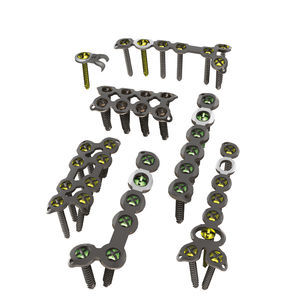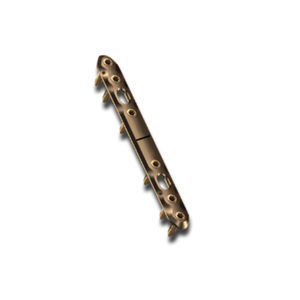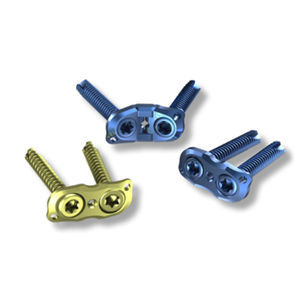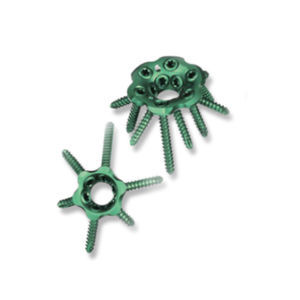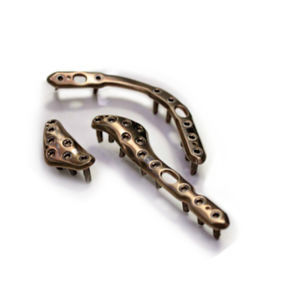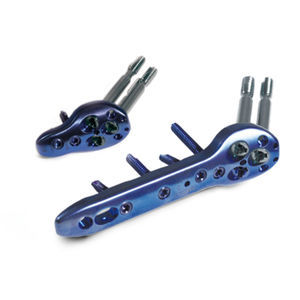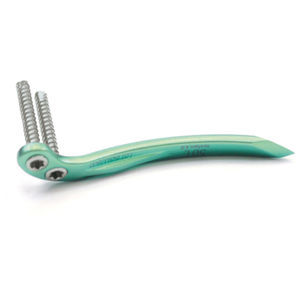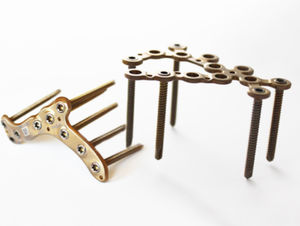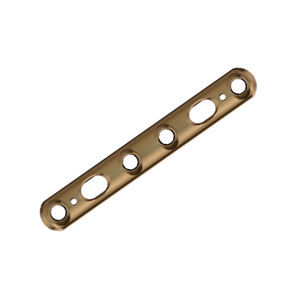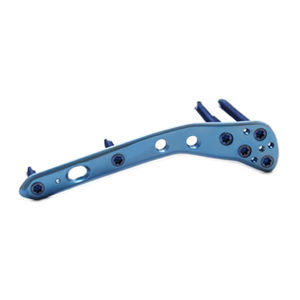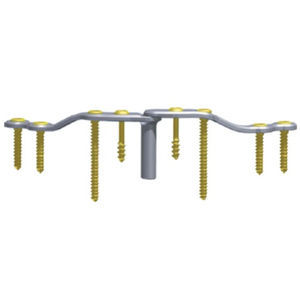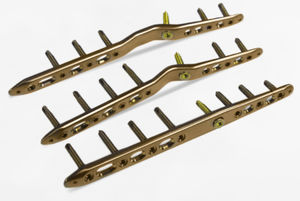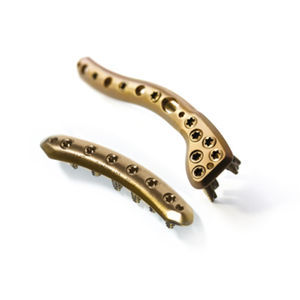
Olecranon compression plate 3.409 seriesdistalproximallocking
Add to favorites
Compare this product
Characteristics
- Applications
- olecranon
- Part of bone
- distal, proximal
- Locking
- locking
- Materials
- titanium
- Length
88 mm, 121 mm, 151 mm, 181 mm
(3.5 in, 4.8 in, 5.9 in, 7.1 in)- Number of holes
2 unit, 4 unit, 6 unit, 8 unit
Description
Contraindications
Absolute:
• Health condition precluding surgery.
• Allergic reactions to the metal from which the implant is made.
• Active infection.
Relative:
• Weakened bone (by disease, infection or prior implantation) making it impossible to install/stabilize the implant properly.
• Abnormal perfusion of fracture area.
• Excessive obesity.
• Lack of adequate tissue coverage.
• Psychiatric disorders or the disorders of the musculoskeletal system which may create a risk of fusion failure or complications in the postoperative period.
• Other medical conditions that exclude the potential benefits of the treatment.
Procedure stages
Reduction of fracture and stabilization of the fracture fragments using Kirschner wires - particular attention should be paid to the reconstruction of the articular surfaces. Please note that the plates are provided with holes for initial stabilization using Kirschner wires.
The choice of implants - determining the length and position of the implant.
Adjusting the shape of the implant carefully, if necessary.
Positioning of the plate using the compression screw in the extended hole.
Restoring the continuity of the articular surfaces.
Radiological control.
Introduction of the screws in the distal and proximal parts of the plate under the X-Ray control.
Attention: When inserting the screws in the distal parts of the plate make sure they do not move into the articular surfaces.
Wound drainage according to the situation.
Provided that the anastomosis is stable, increasing of efficiency shall not be implemented until the second postoperative day.
Catalogs
Locking plates
171 Pages
Related Searches
- Bone plate
- Compression plate
- Metallic compression plate
- Locking compression plate
- Titanium compression plate
- Distal compression plate
- Compression bone screw
- Interbody fusion cage
- Metallic compression bone screw
- Orthopedic surgery surgery set
- Proximal compression plate
- Forearm compression plate
- Mid-shaft compression plate
- Arthrodesis nail
- Lateral compression plate
- Tibia compression plate
- PEEK interbody fusion cage
- Radius compression plate
- Humeral compression plate
- Metallic intramedullary nail
*Prices are pre-tax. They exclude delivery charges and customs duties and do not include additional charges for installation or activation options. Prices are indicative only and may vary by country, with changes to the cost of raw materials and exchange rates.



